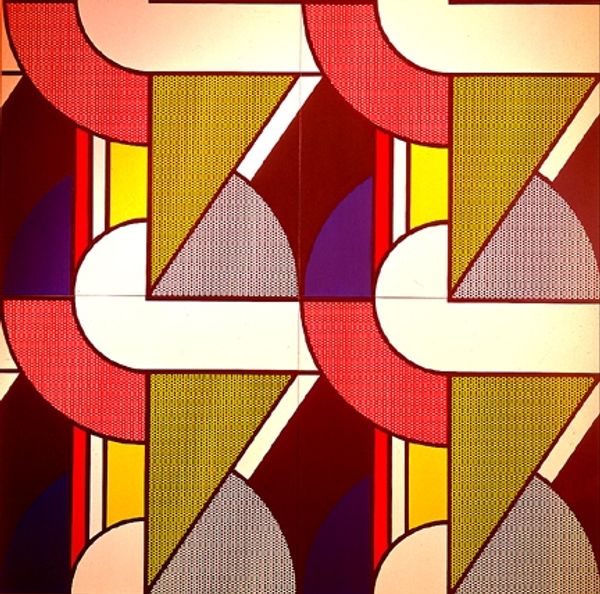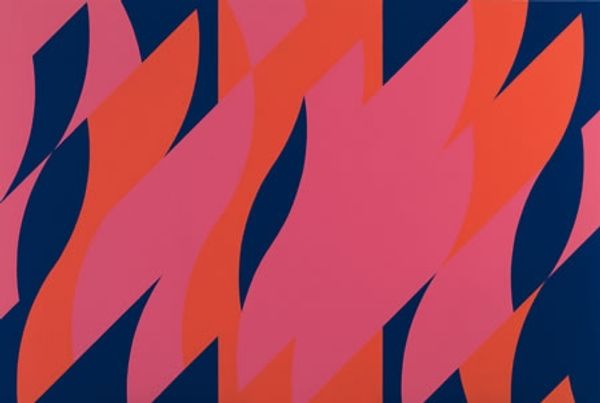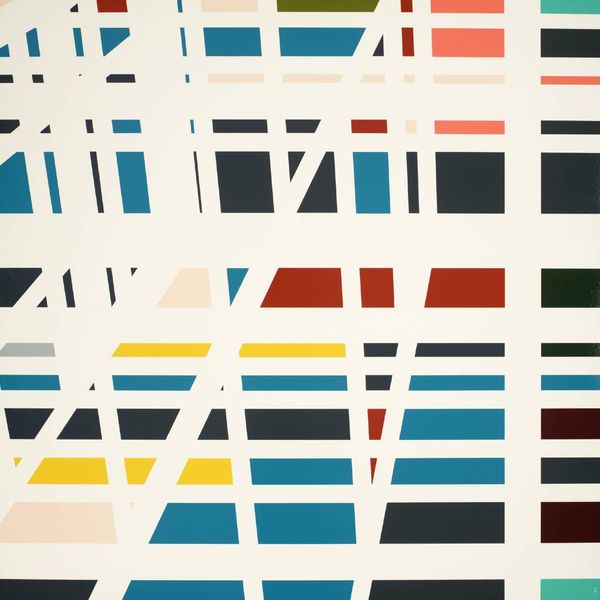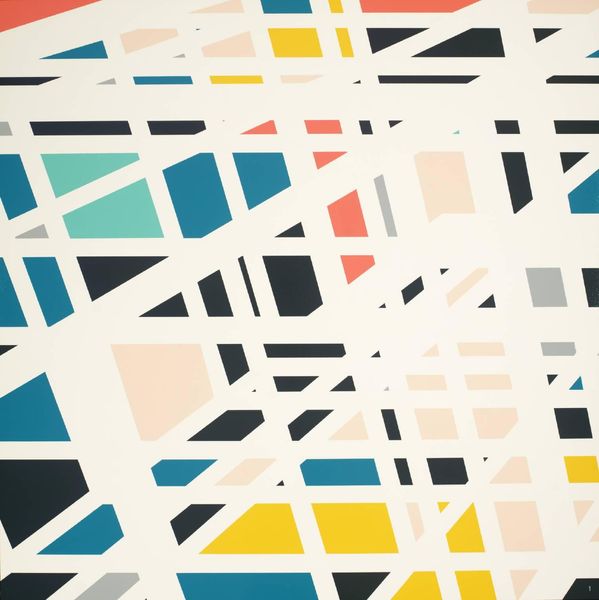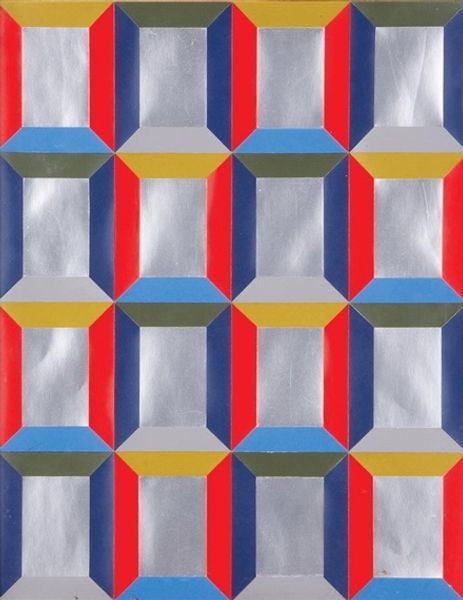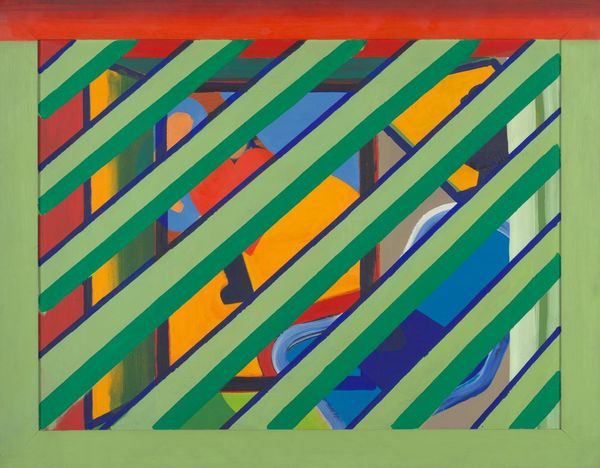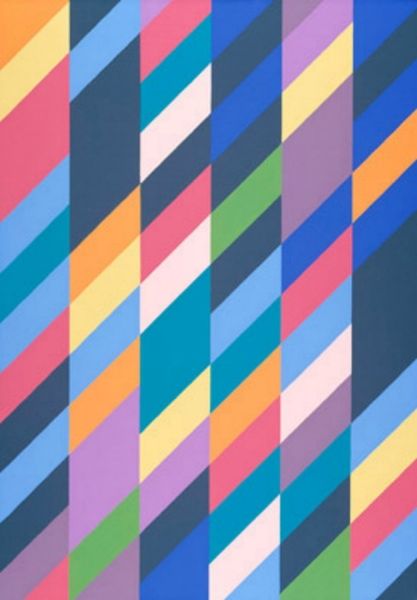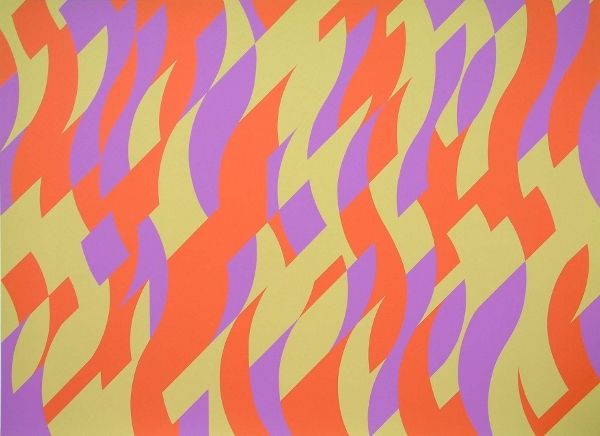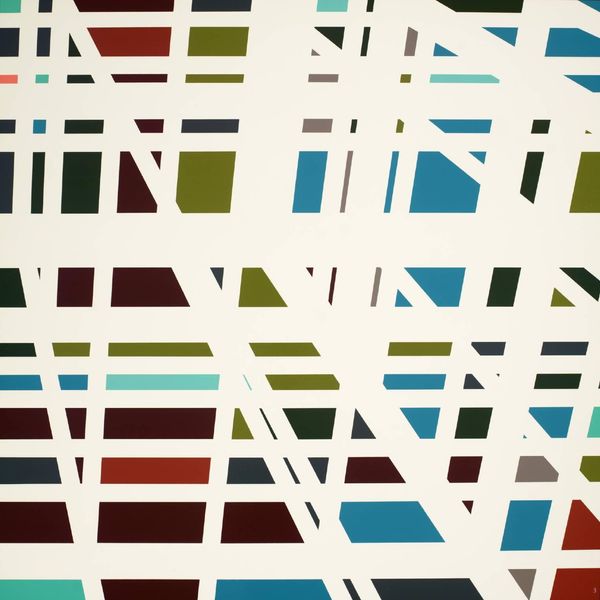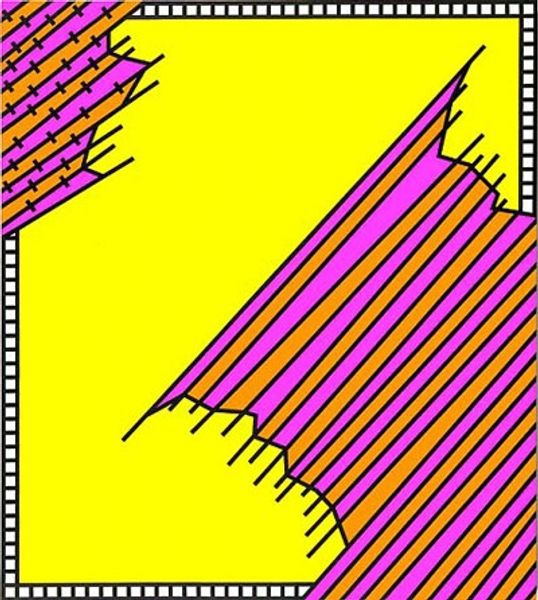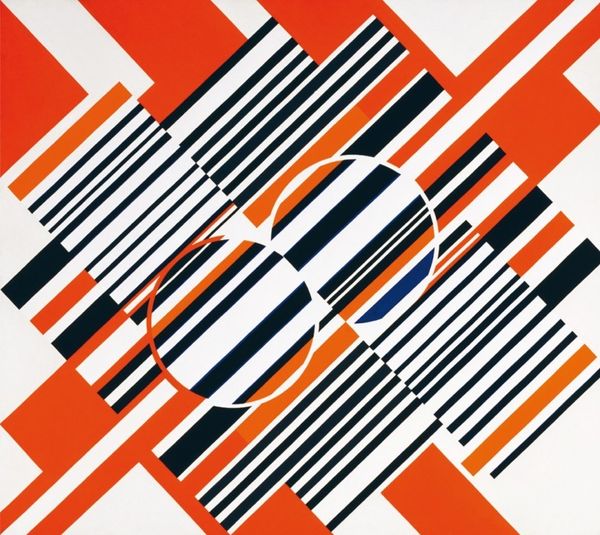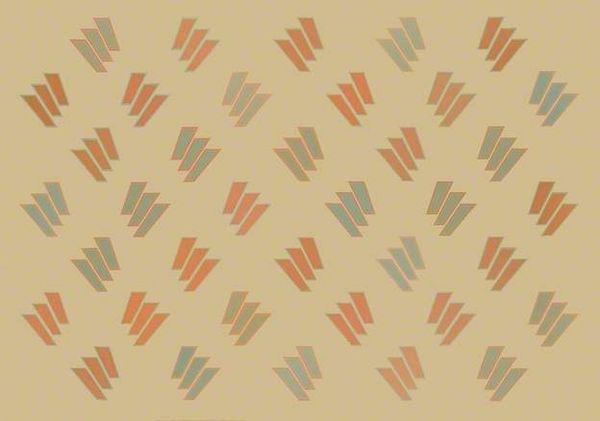
Copyright: Modern Artists: Artvee
Curator: Let's delve into Roy Lichtenstein's "Modern Print," created in 1971. It’s a screenprint showcasing a vibrant and bold composition. Editor: It immediately strikes me as a dizzying vortex of geometric shapes and color. The tight repetition is almost overwhelming, and I am intrigued by the labor-intensive nature of its construction. Curator: Absolutely. Lichtenstein was deeply engaged in pushing the boundaries of printmaking. He elevated a process typically associated with mass production into the realm of fine art. Note the Ben-Day dots, a hallmark of his style that simulates the printing process of comic books, challenging notions of artistic originality. Editor: Right, this isn't just about aesthetic enjoyment; it's about interrogating the relationship between artistic creation, reproduction, and consumption. Consider the screenprinting process itself—the layering of colors, the registration of the dots—it all speaks to the industrial underpinnings of modern art and its intersection with popular culture. How does this democratize art? Curator: The work appropriates and elevates elements of mass culture, blurring the lines between "high" and "low" art. He takes a technique intended for commercial printing and showcases it within the fine art context, influencing, of course, how society views popular culture's role within artistic institutions. Editor: Precisely! And there is certainly some social commentary. In the 1970s, abstract patterns and geometric motifs proliferated in domestic spaces as textiles or interior decor—Lichtenstein seems to acknowledge that prevalence, further challenging existing notions of artistry. Curator: Indeed. The bold primary colors—red, yellow, blue—add to its graphic impact, almost like a visual assault. The seemingly mechanical and perfect rendition can be perceived as commentary of the time period's technological innovations in artistic techniques. Editor: It's an assertive piece that challenges us to consider the very definition of art in the age of mechanical reproduction and consumerism. There is great social impact here, given that these themes of labor and art are continuously present within society. Curator: A potent intersection of art, industry, and cultural critique. It leaves us questioning the perceived value of originality in an era defined by replication. Editor: Yes, a fascinating snapshot of art grappling with its role in a rapidly changing society and artistic approach, thanks to its innovative construction.
Comments
No comments
Be the first to comment and join the conversation on the ultimate creative platform.
